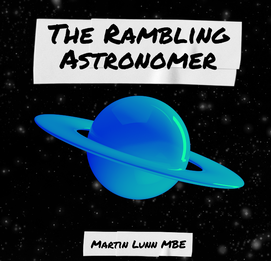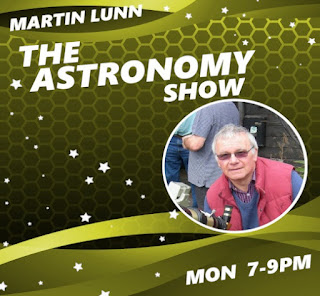June 30th 1954: The Forgotten British Eclipse
An eclipse of the Sun is one of the most awesome sights in nature. The Moon passes in front of the Sun, and where its shadow falls on the Earth, day becomes night for a brief time. The most recent eclipse of the Sun,on April 8th 2024, was visible from parts of Mexico, the United States of America and Canada.
We are often told that that the last total eclipse of the Sun visible from the UK was in 1999 and before that, 1927. Most reports forget the British eclipse on June 30th 1954, when totality was visible from Unst, the most northerly of the Shetland Islands, and northern Yell. A large partial eclipse was seen in other parts of Scotland, where weather permitted.
The 70th anniversary seems a good time to tell the story of this event, which was the first total eclipse seen in Scotland since 1699.
The path of totality started in northern Canada, passing over Greenland, Iceland, the Faroe islands and the Shetlands. It continued through southern Scandinavia, and northern Europe before ending in north eastern India. With the exception of the northern Shetlands, Scotland was to experience a partial eclipse.
The eclipse was watched by professional and amateur astronomers from land, sea and in the air. Many Europeans chose Scandinavia, but over two hundred people made their way to Unst, travelling in the ferry 'Earl of Zetland', a small coaster which served the Shetlands until the 1970s.
The ferry set off at 7am from Lerwick, on the mainland. It called at the islands of Whalsay and Fetlar, and the harbours of Mid Yell and Uyeasound on the island of Yell, reaching the pier at Baltasound on the island of Unst at noon, in good time for the eclipse which would begin at twenty-five past one. The passengers included excited school children from Lerwick Central School and Brough School, Whalsay.
Some passengers stayed on board to watch the eclipse while others tried to reach Norwick, the most northerly hamlet in the UK. Most failed due to a lack of available transport.
The weather on the morning of the eclipse was extremely wild; 60 mph winds and showers of sleet and rain blowing in the faces of the stoical eclipse chasers. Amazingly enough, breaks in the clouds opened up just as the eclipse started.
Two Manchester Astronomical Society members, both Fellows of the Royal Astronomical Society, Kenneth Brieley and Gerald Marlowe, saw the eclipse from the very best vantage point. They had travelled to Unst overland. Starting in Manchester they had to take four different coaches and two small ferries, with the intention of meeting up with a larger group of British Astronomical Association members at Baltasound. They never did meet the group, but saw the eclipse while their peers missed it.
Brierley and Marlowe were guests of Mr & Mrs Sinclair of The Hau, Skaw, Unst, the most northerly house in the UK. There they met up with a BAA member, Dr R H G Lyne-Pirkis, and his wife. Dr Lyne-Pirkis had arranged to watch from the headland at Skaw, where there were some disused war-era buildings for shelter. The intrepid Manchester astronomers joined the doctor, his wife, and Mr & Mrs Sinclair, on the morning of the eclipse.
Dr Lyne-Pirkis had a 3.5 inch telescope, together with a camera on a tripod. The two Manchester astronomers were equipped with binoculars.
Despite the wild weather the cloud thinned and the corona, or outer part of the atmosphere of the Sun, became visible. It was much brighter than expected, and a beautiful arc of bright prominences covered about one sixth of the Sun’s southern edge.
A feature known as 'Bailey’s Beads' was seen. Named after
the English astronomer Francis Bailey, who saw them during the eclipses of 1836
and 1842, the bright 'beads' are caused by sunlight shining through the
mountain ranges around the edge of the
Moon.
Local residents saw the eclipse through gaps in the clouds at Norwick and Haroldswick between two and four miles south of Skaw. Mrs Mort of Norwick reported seeing the whole eclipse, including the corona and 'flames' around the edge of the Sun, looking into the windscreen of her husband’s lorry. At Baltasound, where the Earl of Zetland was berthed, the eclipse was briefly seen through cloud. The captain of the ferry noted that during totality there was a temperature drop of nine degrees.
The 'Shetland News' noted that many of the scientists ignored local advice about the best places to view the eclipse. The BAA group arrived at Baltasound, where they were advised against going to Saxavord, the highest hill on Unst. They headed for the heights anyway, where they were engulfed in the habitual low cloud and didn’t see anything. Interestingly, Saxavord is now home to a new UK space port, and will be a future rocket launch site.
The best way of seeing the 1954 eclipse was from the air. The Astronomer Royal Sir Harold Spencer Jones was the first holder of the post to see an eclipse in this way. He flew from RAF Leuchars in Fife, on the east coast of Scotland, in an RAF Hastings aircraft, and described it as a fascinating experience.
Many distinguished astronomers and figures from industry saw the eclipse from a BOAC Hermes airliner, which was on a special training flight over the north of Scotland. The aircraft carried photographic and scientific equipment to monitor the eclipse, and the pilot tipped the plane onto its side to allow all on board to get a good view.
1954 saw the British eclipse that everyone forgot;
nevertheless it was a rare and dramatic event, worthy of attention. The
Shetlands won't see another total eclipse until the 3rd June 2133.
Let's hope they get better weather!
www.theramblingastronomer.co.uk






























